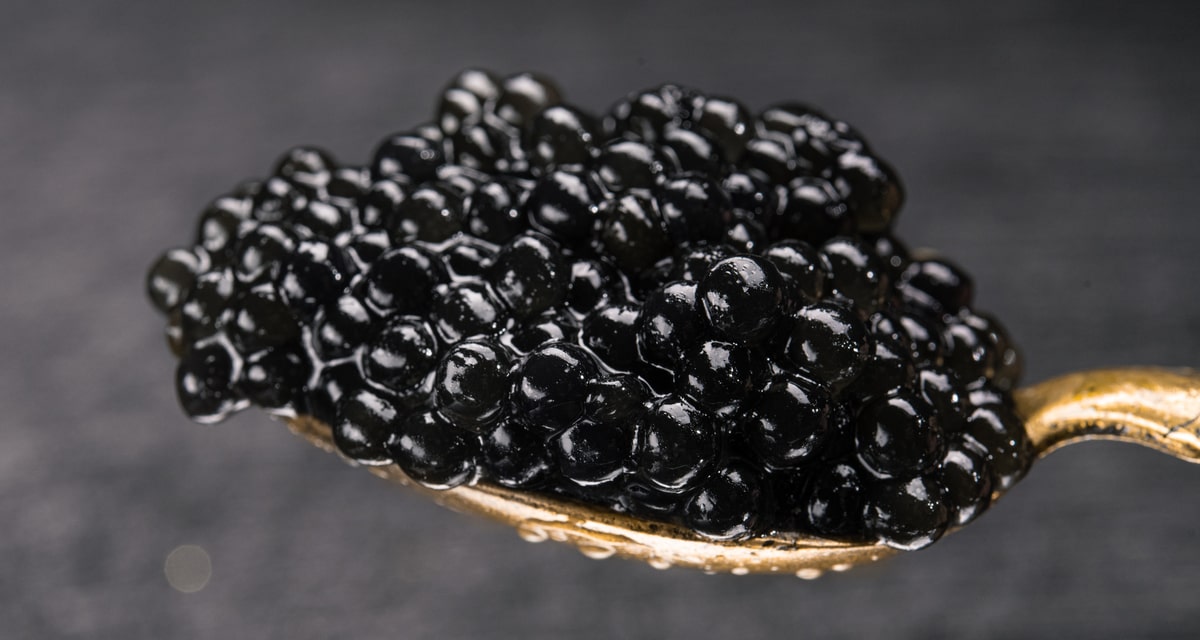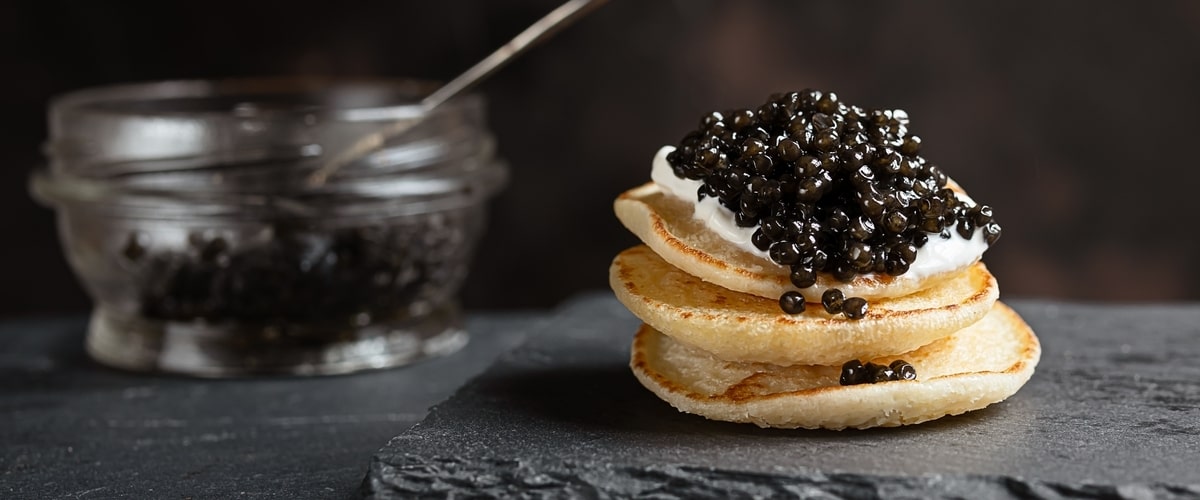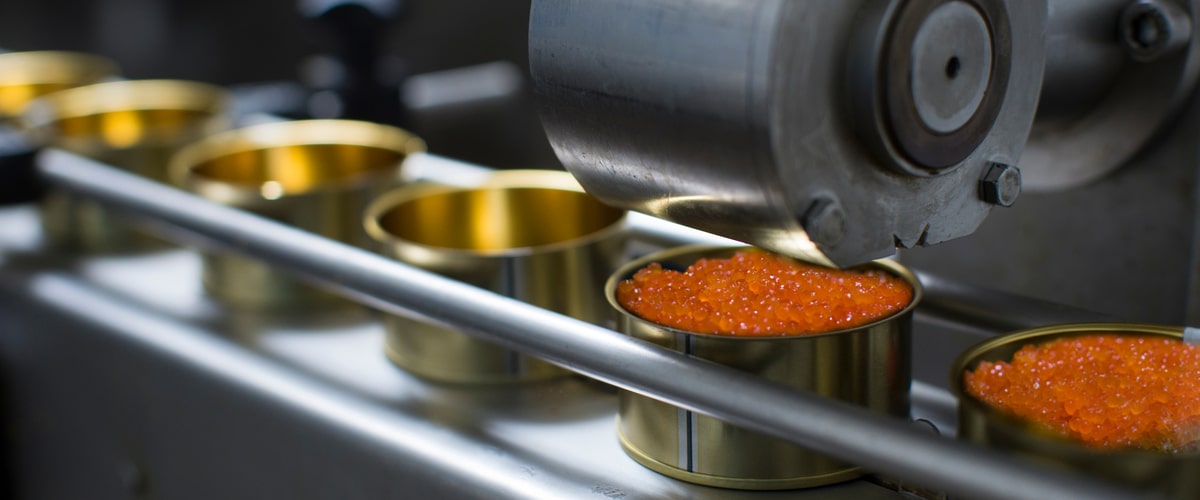A History of Caviar: How it Became a Luxury Item
Category : Food Stories, Party Ideas, Recipes, Press Room |
Posted : Mar 27, 2023
From its origins in ancient Persia, caviar has come a long way to become one of the most celebrated delicacies of modern times. Over the centuries, Caviar has been loved and enjoyed by royalty and elite circles around the world as a luxurious item reserved for special occasions. But how exactly did it evolve into such an esteemed symbol? In this blog post, we will explore the fascinating history of Caviar offering an insight into its journey from a simple food item to a high-end luxury product that commands exorbitant prices today. Culinarians, connoisseurs, and perplexed professionals alike - let us embark on our exploration together!
The origins of caviar and its rise to fame
Caviar, often considered the epitome of culinary luxury, traces its roots back to the ancient world where it was first introduced as a delicacy among Persian royalty. The word "caviar" itself is believed to have originated from the Persian word "khaviar," which translates to "bearing eggs." As we venture through the annals of history, the fascination with caviar spread across empires and transcended geographical boundaries. During the Byzantine era, it was held in high regard as a precious indulgence reserved for imperial feasts. The Russian Tsars, captivated by its unique taste and textured appearance, elevated caviar's status further - ultimately transforming it into a coveted treasure that symbolized wealth and power. This rapid rise to fame fueled the extensive trade of caviar, solidifying its position as a timeless gastronomic icon cherished by both gourmands and connoisseurs alike. The intricacies of caviar's elaborate past testify to the powerful influence of this singular delicacy on human culture and the ever-evolving narrative of culinary extravagance.
How caviar's popularity spread throughout the world

The global popularity of caviar, the luxurious and indulgent product representing high society, can be traced back to a rich tapestry of historical events and cultural exchanges that shaped its trajectory. While initially relished by ancient Persians and Greeks, who recognized the delicacy's alleged medicinal properties, it was the Russian tsars who truly catapulted caviar into the annals of gastronomic fame. Their passion for the sturgeon roe solidified the delicacy's association with luxury, power, and opulence. In the 19th century, as European chefs began to incorporate caviar into their culinary creations, its status soared among the aristocracy, and demand grew exponentially. However, caviar truly made its transatlantic voyage during the Belle Époque, where it became synonymous with the glamor and prosperity of the Gilded Age in America. Artfully navigating the intricate pathways of culture, politics, and geography, caviar has managed to establish itself as one of the world's most sought-after and prestigious gourmet indulgences, extending its reach beyond its humble beginnings by the Caspian Sea.
Early recipes featuring caviar

The gastronomic delight of caviar has been tantalizing taste buds for centuries, with its earliest recipes dating back to medieval feasts fit for nobles and royalty. As a historian delving into the magical world of epicurean ventures, one would be transported to lavish banquet halls, witnessing the marriage of caviar with other luxurious ingredients such as blinis and vodka in old Russia. One such recipe that tantalizes the imagination is the “Caviar Pie,” a creation that involved layering sturgeon roe between blinis and adorning the dish with elegant gold leaf for a satisfying crunch. Court chefs crafted delectable appetizers using caviar, lemons, and herbs, serving them to the aristocracy with pomp and splendor. In ancient Persia, caviar was known as a treat reserved for the privileged class and enjoyed with flatbread and wine. The fascinating journey of caviar through the pages of history reveals a sophisticated and sometimes decadent testament to culinary artistry, a symbol of luxury that has endured the test of time.
Famous people who have enjoyed caviar throughout history
Caviar, known as the luxurious black gold, has been intriguing taste buds of the rich and famous throughout history. Its mystique and allure captivated the powerful and influential monarchs of ancient Persia, who cherished this royal delicacy, believing it held medicinal properties. Numerous historical figures, such as Peter the Great and Catherine the Great of Russia, indulged in the exquisite delicacy, symbolizing their opulence and reinforcing the exclusivity of caviar. Even the renowned lover, Casanova, indulged in this exquisite food as an aphrodisiac, easing the way into the most intimate moments of his exploits. As the world evolved and modernized, prominent luminaries, from the likes of Marilyn Monroe and Elizabeth Taylor to Winston Churchill, continued to partake in the fascination that caviar conjured. This culinary indulgence has withstood the test of time, maintaining its prestige as a symbol of high society and rendering it an irresistible treat for eminent personalities throughout history.
Caviar's evolution in terms of production, preparation and presentation

Throughout the annals of human history, the enigmatic and delectable substance known as caviar has seen a fascinating evolution in terms of its production, preparation, and presentation. Once reserved as a royal indulgence for tsars and aristocrats in ancient Persia and Russia where it originated, caviar's intricate process of production has transcended time, adapting to modern machinery and more refined methods of preservation. Rigorous techniques are undertaken to handpick the unrivaled Sturgeon fish roe and treat it meticulously with the perfect balance of salt to preserve its taste and quality. As trade routes expanded and connoisseurs around the globe sought this luxurious bounty, chefs and gastronomes painstakingly honed their culinary prowess to devise innovative and alluring methods of preparation. From the traditional adornment of icy vodka and buttered toast points to more avant-garde presentations atop delicate blinis or glistening sushi bites, caviar has enraptured countless palates over the centuries. Connoisseurs and epicures alike marvel at the symphony of subtle flavors and sensual textures with each unique presentation of caviar, proving the historical adage that the test of time only serves to enrich that which is intrinsically divine.
The state of the current caviar market and how it has changed over time
In delving into the intriguing history of the caviar market, one cannot help but notice the remarkable transformation it has undergone throughout time. From its ancient roots as a luxury reserved for the elite classes of Persia and Rome to its ubiquitous presence in contemporary culinary experiences, the caviar market has adapted and evolved to the shifting socio-political landscapes. In recent years, however, environmental pressures and shifting consumer preferences have greatly impacted the market. The once predominant wild sturgeon stocks have dwindled, enforcing stricter regulations and encouraging the rise of sustainable aquaculture practices. This shift has resulted in an influx of diverse caviar producers, fostering regional variation and distinctly unique flavors. As modern connoisseurs explore the delicacy's nuances, it is fascinating to consider how the current state of the caviar market serves as a reflection of our society's evolving priorities and a testament to the capacity for resilience and adaptation within the luxury food industry.
Caviar has come a long way from its humble beginnings, going from a delicacy made in the kitchens of royalty to being accessible and enjoyed by people around the world. Throughout its journey it has been celebrated by famous people, featured in early recipes, and incorporated into many cultures’ cuisines in one way or another. Caviar has continued to evolve over time with new production methods, preparation techniques, and presentation styles developed around the world. While its current market still presents some challenges due to sturgeon conservation efforts and sustainability issues, caviar remains a staple of luxury cuisine that is sure to keep people interested for centuries to come. Its captivating flavor continues to remind us all why so many gravitated towards this regal delicacy in the first place -the complex blend of brine and buttery-nuttiness will never be forgotten. To experience a true taste sensation look no further than the iconic caviar – a luxurious food that continues to amaze both palates and generations alike.













